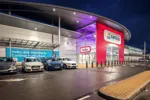Aston Martin has launched a new online configurator as part of its Project Horizon brand transformation strategy.
The new web-based tool has been designed to elevate the car maker’s online digital experience for its customers, fans and dealer partners.
It is said to offer greater flexibility and convenience, with a simplified interface and a larger range of paint and upholstery choices.
Aston Martin’s chief executive officer Tobias Moers said: “The experience of buying an Aston Martin should be as pleasurable as owning one and our new configurator has been created with this in mind.
“Our customers are very busy people, so it is our job to make the buying process as simple and as enjoyable as possible. This new configurator does that. Like many businesses, a proportion of our customers switched over to online buying during the pandemic, so we have improved this process to allow remote customers to receive the full Aston Martin experience.”
Customers can zoom in on the fine details of their desired car, which can then be viewed in a cinematic video that clearly shows the full exterior and interior specification chosen.
At any point in the online process users can switch to personal interaction and schedule an online session with their local dealer, who can assist with their configuration.
Alongside the launch of the new configurator, Aston Martin has announced a suite of changes to its 2022 model line-up.
Both the coupe and Volante variants of the DB11 V8 get a 25PS power boost to 535PS.
The marque’s flagship Super GT will now be known as the Aston Martin DBS, after dropping the ‘Superleggera’ badge, and the V12 DB11 has dropped the ‘AMR’ badge.
New wheel designs, colours and upholstery options are introduced across the range.
Delivery of the long-awaited Valkyrie hypercar and new derivatives of the DBX are among the key priorities for 2021, while electrified models are expected to become integral to the range by 2025.















Login to comment
Comments
No comments have been made yet.